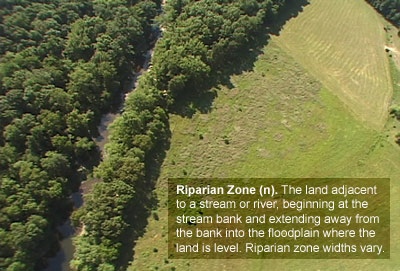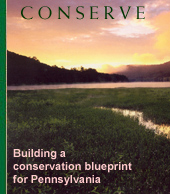| |
The Upper Ohio River Basin
Including the Ohio River, the Allegheny River, French Creek,
and the Shenango River
The Ohio River and its tributaries represent one of the most diverse freshwater ecosystems on earth. This is particularly demonstrated by a richness of fish and mollusk species. The Ohio and Allegheny rivers have been identified as important ecosystems for conservation from the basin source here in Pennsylvania as well as downstream across the Midwest. As such, habitat and ecosystem qualities are not equal along the 981-mile course of the Ohio River, the 321-mile length of the Allegheny River, nor their tributaries.
The most significant biodiversity of the Ohio River Basin in Pennsylvania is found within the Allegheny River, especially the middle free-flowing section from Kinzua Dam to East Brady, where the navigational lock-and-dam system begins. Other important sections of the Ohio Basin include the upper Allegheny River Basin in north central Pennsylvania and New York, certain tributaries of the lower Allegheny River, e.g. Mahoning Creek, and portions of the Shenango River, which is within the Beaver River system.
The
Allegheny River
From the Kinzua Dam near Warren, Pa., to the town of East Brady in southern Clarion County, the middle Allegheny River flows free and unobstructed by dams. This is truly one of America’s great wild river sections, with clusters of islands, deep slow eddies, shallow riffles and long runs. Hours can be spent drifting by shaded banks, along steep forested valley slopes and under foraging bald eagles.
While much of the Allegheny River exhibits good water quality and diverse habitats, the area is not without concerns. Drainage from unregulated coal mines and polluted discharges from industrial sites had left sections of the lower Allegheny River in a severely degraded state. Over the years, public and private efforts have improved the river’s water quality, but some pollution remains. The presence of locks and dams along the lower Allegheny has also impacted the river, as they block the flow of sediment down the river and hamper wildlife efforts to travel through the river. The impacts of river gravel mining are not well understood. Sections of the waterway, particularly the lower portion, could undergo significant restoration activities in the near future.
WPC has protected nearly 20,000 acres of islands, shorelines and valleys along the Allegheny River. Most of the land has been conveyed to state and federal public land managers. WPC continues to hold 242 acres including two islands and one floodplain forest. WPC also holds 11,305 acres of conservation and recreation easements, most of which are in Venango County. Within the Allegheny River watershed, WPC has targeted 550 miles of major river and tributary ecosystems for conservation, along with 84 occurrences of globally ranked (imperiled globally) plants, invertebrates, vertebrates and aquatic communities; three biological diversity areas which have highly significant habitats, including island groups; and nine forest blocks that adjoin river riparian zones. Together with its partners, WPC hopes to protect and restore the Allegheny River so that present and future generations continue to enjoy this natural treasure.
|
Part of the Upper Ohio River basin is French Creek, which originates in western New York and flows 117 miles to its confluence with the Allegheny River at Franklin, Pennsylvania. French Creek is perhaps the most ecologically significant waterway in the state, containing more species of fish and freshwater mussels (Unionidae) than any other similar-sized stream in the northeast United States. More than 80 species of fish and 27 native species of freshwater mussels are found in the watershed, along with various other wildlife and plant species.
The Shenango River watershed is one of the most important in Pennsylvania for aquatic life in the upper Ohio River Basin. Presently, certain reaches are the only high-quality large stream ecosystems of the Beaver River system.

|

